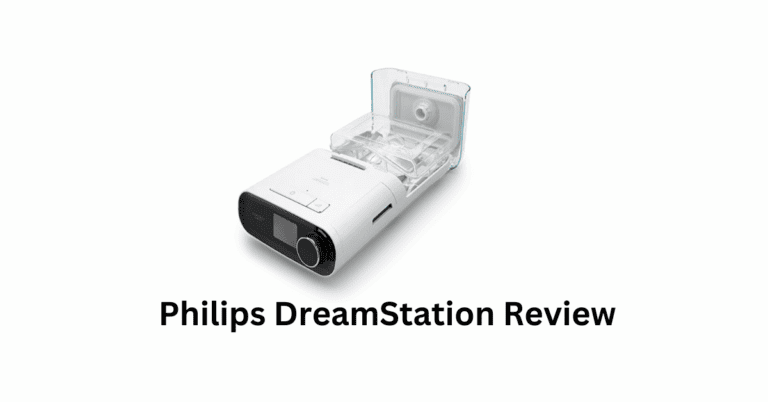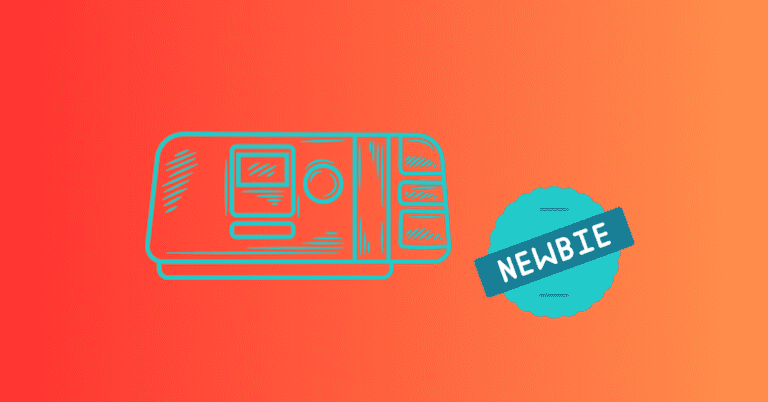CPAP vs BiPAP: Understanding the Differences
If you’ve been diagnosed with obstructive sleep apnea (OSA) or another sleep-related breathing disorder, your doctor may have recommended positive airway pressure (PAP) therapy to help manage your condition.
The two most common forms of this therapy are CPAP (Continuous Positive Airway Pressure) and BiPAP (Bilevel Positive Airway Pressure).
While both machines are designed to improve breathing during sleep, they function in slightly different ways, and choosing between them can depend on the severity of your condition and your comfort.
In this article, I will explore the differences between CPAP and BiPAP, how each therapy works, and which may be right for you.
What Is CPAP?
CPAP (Continuous Positive Airway Pressure) is the most commonly prescribed therapy for obstructive sleep apnea. It’s the machine I use.

This is me with my ResMed CPAP Machine.
CPAP machines deliver a constant, steady stream of air through a mask, keeping your airway open throughout the night. The goal is to prevent your airway from collapsing, reduce apneas (pauses in breathing), and ensure that your body receives adequate oxygen.
How CPAP Works:
- Constant Airflow: A CPAP machine delivers a single, fixed pressure of air that helps keep the airway open, whether you are inhaling or exhaling.
- Mask Options: CPAP machines can be used with various mask types, including full-face masks, nasal masks, and nasal pillows, depending on your preference and comfort.
- Common for OSA: CPAP is typically prescribed for individuals with obstructive sleep apnea, where the airway becomes blocked during sleep.
Benefits of CPAP:
- Highly Effective: CPAP is an effective treatment for reducing apneas and improving sleep quality in people with OSA.
- Cost-Effective: CPAP machines are generally more affordable than BiPAP machines and are often covered by insurance.
- Easier to Use: CPAP machines have simpler settings, making them easier to use and adjust for many individuals.
Personal Insight: When I was first diagnosed with obstructive sleep apnea, my doctor prescribed a CPAP machine. It took a little while to get used to wearing the mask, but once I adjusted, the improvement in my sleep quality was incredible. I no longer woke up gasping for air, and I felt more rested during the day.
What Is BiPAP?
BiPAP (Bilevel Positive Airway Pressure) machines provide two different levels of air pressure: one pressure for inhalation (IPAP) and a lower pressure for exhalation (EPAP). This makes BiPAP therapy more comfortable for people who may have trouble exhaling against the constant pressure of a CPAP machine.
How BiPAP Works:
- Dual Pressures: The machine delivers a higher pressure when you inhale and a lower pressure when you exhale. This makes breathing feel more natural and comfortable, especially for those with certain respiratory conditions.
- More Versatile: BiPAP is often used for people with more complex respiratory issues, such as central sleep apnea (CSA), chronic obstructive pulmonary disease (COPD), or other lung disorders.
- Preset or Auto-adjusting: Some BiPAP machines can be set to auto-adjust pressure levels based on your breathing patterns.
Benefits of BiPAP:
- Easier Exhalation: The lower exhalation pressure makes BiPAP more comfortable for those who struggle to breathe out against the higher pressure of a CPAP machine.
- Versatile for Complex Conditions: BiPAP is often prescribed for individuals with CSA, COPD, or other lung conditions where breathing needs additional support beyond what CPAP offers.
- Customizable Settings: BiPAP machines allow for more customizable pressure settings, which can be helpful for people with varying breathing needs throughout the night.
Personal Insight: While I use a CPAP machine, I know others who have switched to BiPAP due to difficulty exhaling against CPAP’s constant pressure. They’ve told me that the dual pressure settings of BiPAP made a world of difference in their comfort and ability to sleep through the night.
Key Differences Between CPAP vs BiPAP
This video from sleepdoctor.com will explain the differences for you.
- Air Pressure Delivery:
- CPAP delivers a single, constant air pressure during both inhalation and exhalation.
- BiPAP delivers two pressure levels: higher during inhalation and lower during exhalation, making breathing more comfortable for some users.
- Comfort:
- CPAP may feel uncomfortable for people who struggle to exhale against constant pressure, especially those with certain respiratory conditions.
- BiPAP provides a more natural breathing experience with dual pressures, making it better suited for people with complex breathing needs.
- Conditions Treated:
- CPAP is primarily used for obstructive sleep apnea (OSA).
- BiPAP is used for both OSA and more complex respiratory conditions like central sleep apnea (CSA), COPD, or other lung diseases.
- Cost:
- CPAP machines are generally more affordable and covered by most insurance plans.
- BiPAP machines tend to be more expensive due to their advanced functionality and are usually prescribed for more complex cases.
- Machine Settings:
- CPAP machines typically have simpler settings with a fixed or auto-adjusting pressure.
- BiPAP machines offer more settings and customization, allowing for greater control over inhalation and exhalation pressures.
When to Consider BiPAP Over CPAP
While CPAP is often the first-line treatment for sleep apnea, there are specific cases where BiPAP may be recommended:
- Difficulty Exhaling Against CPAP Pressure: Some people find it hard to exhale against the continuous pressure of CPAP, leading to discomfort and poor adherence. BiPAP’s lower exhalation pressure can make breathing easier.
- Co-existing Respiratory Conditions: If you have conditions like COPD or central sleep apnea, your doctor may prescribe BiPAP for more customized breathing support.
- Higher Pressure Requirements: People who require higher levels of air pressure to treat their sleep apnea may benefit from BiPAP’s dual-pressure settings, which make high pressures more tolerable.
Personal Insight: While CPAP worked well for me, I’ve heard from others with more severe respiratory issues that BiPAP was a better fit for them. The dual pressures made it easier for them to breathe, especially when they needed higher levels of air support.
Conclusion: CPAP vs BiPAP—Which Is Right for You?
Choosing between CPAP and BiPAP depends largely on your specific needs and how comfortable you are with each type of machine. For most people with obstructive sleep apnea, CPAP is the most effective and cost-efficient option. However, if you have difficulty tolerating CPAP or have additional respiratory conditions, BiPAP may provide the comfort and support you need to improve your sleep.
It’s always important to consult with your doctor or sleep specialist to determine which therapy is best for your condition. Both machines can dramatically improve sleep quality and overall health, but the right fit will depend on your personal experience with PAP therapy.

Personal Insight: For me, CPAP was the right choice, but I’ve learned that everyone’s needs are different. If you’re having trouble with CPAP or need more breathing support, it’s worth asking your doctor if BiPAP might be a better option. The key is finding the right solution that helps you get the restful, restorative sleep you need.
Do you have any questions or stories about switching from CPAP to BiPAP or vice versa? Let me know in the comments below.





